BLOCKCHAIN PRIMER
Blockchain technology can be both disruptive and supportive in the entertainment sector, however widespread adoption is slow. If major entertainment companies chose to adopt blockchain and digital tokens, the technology has the potential to redefine entertainment and media information and data flows in addition to offering accounting efficiency, incentives and true peer-to-peer shared experience between creators and consumers.
As traditional systems become obsolete and inefficient, blockchain is a win for everyone including content creators, distributors, guilds, agencies, talent representatives, performing rights organizations, financial institutions and regulatory bodies. From speed of transactions, crypto ticketing and rewarding viewers for their attention and data, to accountability, identity and privacy, blockchain is here to stay.
The Bitcoin Whitepaper by Satoshi Nakamoto solved a tough problem existing in digital economies – the ability to double-spend. By using a smart incentive mechanism and cryptography, for the first time in history, Bitcoin allowed for online payments to be sent directly from one party to another without going through a financial institution.
By now, Blockchain Technology has become a major buzzword, and most are familiar with the concept of an immutable ledger of transactions which offers security through cryptography.

Figure: “Bitcoin Whitepaper”
Source: https://bitcoin.org/bitcoin.pdf
Video: Blockchain Explained –
Source MIT http://blockchain.mit.edu/how-blockchain-works
Ethereum is a next-generation public blockchain based on Bitcoin’s blockchain, which Vitalik Buterin publicly proposed in 2014 during the North American Bitcoin Conference in Miami, and later bootsrapped through a crowd sale of Ether (Ethereum’s native cryptocurrency) successfully raising $14.8 million. With the introduction of the Ethereum blockchain, in addition to adding transactions to the blockchain ledger, we are now able to put entire computer programs directly on the blockchain. These programs (called Smart Contracts) are tamper-resistant and, once deployed, can not be stopped unless they run out of gas. The same way a car stops operating once it runs out of gas, a Smart Contract program requires resources (“gas”) to function. In the case of Ethereum Smart Contracts, that resource is the Ether cryptocurrency.
Video: Vitalik Buterin reveals Ethereum
Video: “Ethereum in 25 minutes”
Since 2017, a lot of companies focused their attention on using smart contracts to issue their custom cryptocurrency tokens. The companies would then sell the tokens as part of a fundraising campaign directed to the public by conducting Initial Coin Offerings (ICOs).
When selling tokens, a company commits to accepting the issued token as the only method of payment for goods and services offered on the project platform. Additionally, because the companies are providing a platform where the token can be used, early adopters can participate in the value growth of the tokens as demand for the project’s platform increases, and more and more people need the tokens to participate in the companies services.
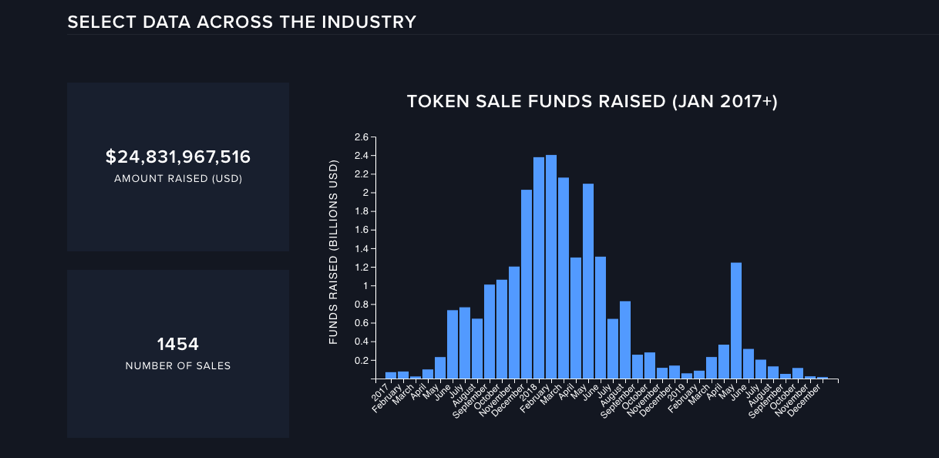
Figure: Smith+Crown Token Sale Activity Tracker (Jan 2017 to present
Source: https://sci.smithandcrown.com/ico-tracker
Video: “What is an ICO” 20018 video
Source: CNBC International
Issuing tokens for fundraising if very similar to issuing stock when going public. Unlike with stocks, however, the difference with tokens is that the tokens have a functioning utility within the platform.
A good analogy is if Netflix had issued NFLX tokens instead of shares during its Initial Public Offering in 2002. Today, these tokens would be what subscribers use when paying for services on the Netflix streaming platform. Additionally, the subscribers who bought tokens in 2002 would also be benefiting from the increase in token price due to Netflix’s growth.
The developments with Smart Contracts over the last four years have opened the door for new kinds of Decentralized Applications.
These decentralized applications gain the benefits of cryptocurrency and blockchain technology and are the reason all governments and major corporations are looking to implement blockchain across every industry.
Once deployed, Decentralized Applications are autonomous and every record of operation within the application is stored on the blockchain to avoid centralization.
Video: What is a Dapp?
Source: Blockgeeks Youtube
Video: “Our Decentralized Future”
Source: Toronto International Film Festival / Youtube
For entertainment-driven companies, this offers many exciting new opportunities.
While fundraising platforms like Kickstarter and Indiegogo began the revolution of content creators connecting directly with their audiences, today blockchain and cryptocurrencies give content creators the ability to build economies in addition to bootstrapping creative projects.
Some examples include the ability of creators to use a token to track the life of their creation, incentivize user participation and to reward users for sharing and cross-promoting content. A token can unlock exclusive video content or represent game items such as game currencies and character skins or weapons.
Tokens fall primarily under two categories – fungible and non-fungible. Creating non-fungible tokens on Ethereum is possible with the ERC-721 token standard. ERC-721 is a free, open standard that describes how to program a unique, non-fungible token (NFT). While most ERC-20 (cryptocurrency tokens) are fungible (every token is the same as every other token), ERC-721 tokens are all unique, rare, one-f-a-kind digital collectible. NFT tokens can be managed, owned, and traded. They can represent collectible art, financial instruments, and intellectual property rights, among other things.
Video: What are NFTs?
Source: Ivan on Tech / Youtube
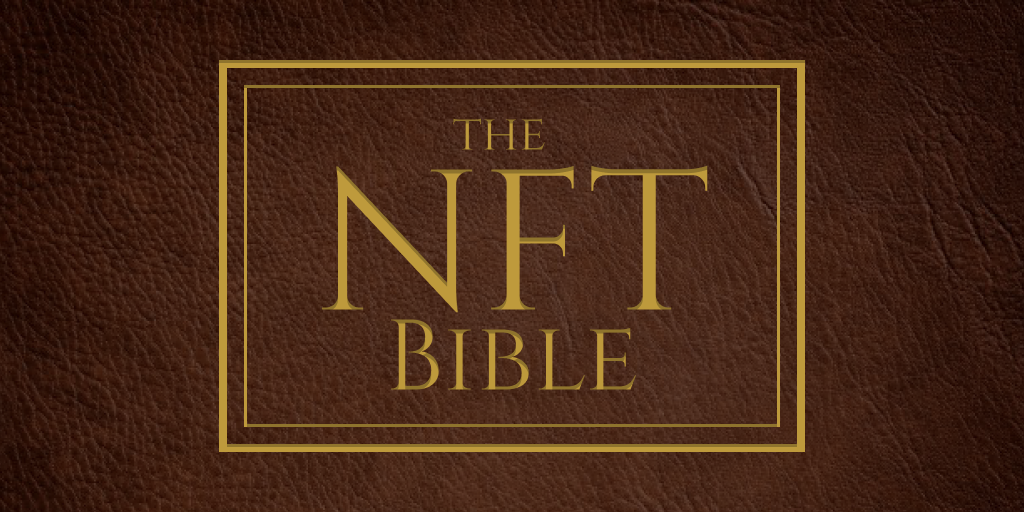
Document: “The NFT Token Bible – everythign you need to know about NFTs”
Source: OpenSea / https://opensea.io/blog/guides/non-fungible-tokens/
Larva Labs created the first digital collectible tokens in the form of “CryptoPunks”. The CryptoPunks are 10,000 uniquely generated characters. No two are exactly alike, and each one of them can be officially owned by a single person on the Ethereum blockchain. CryptoPunks inspired the creation of the ERC-721 standard.
One of the first use case exapmles of ERC-721 NFTs was CryptoKitties – a game built on Ethereum’s blockchain by Dapper Labs. CryptoKitties launched in October of 2017, and the game allows users to purchase, collect, breed, and sell digital cats.
Decentraland and Cryptovoxels are examples of virtual reality projects utilizing NFTS. Both virtual worlds allow users to purchase plots of digital land to navigate, build upon, and monetize.
An interesting aspect of cryptocurrency tokens and tokenized digital assets is the ability to establish a marketplace where users can transact directly with each other without the need for intermediaries.
This is particularly relevant for video games. While monetization of game currencies and game assets is not new, the invention of blockchain technology allows for the tokenization and tracking of these assets along with the ability to assign and maintain unique attributes to each individual token and provide true ownership for participants in the video game.
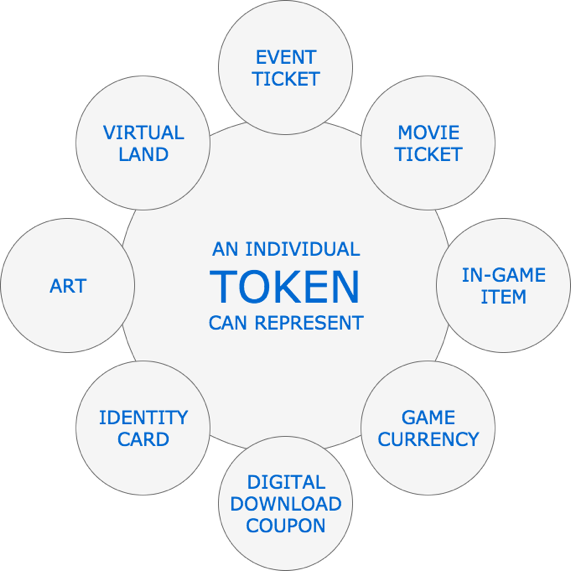
The free2play model in video games is starting to shift towards the new model of play2earn.
A regular player who previously may have never participated in the cash economy of free2play games can now win a digital item by playing a blockchain game. The player then has the ability to sell that item in the open market. For the first time, a consumer can take on the additional role of creator and a direct participant in the project economy and the ability to earn a profit.
The concept of re-selling digital items on secondary markets goes beyond video games and can be applied to the music, film, and TV industries.
With the advent of VHS, DVD, and BLU-RAY, new business models such as rental and secondary market sales emerged, extending the life of the product. Blockchain technology is offering the same opportunities in the digital space, with the bonus that by using smart contracts, content creators can directly and instantly receive royalties from each secondary market sales in perpetuity (something not possible with physical product sales).
Blockchain and tokenization have given rise to new business models: A token can be used as payment unit of account, digital collectible, membership badge, discount coupon, video game item, voting right, lottery ticket, physical property ownership representation, digital download coupon, identity, movie ticket, OTT membership card, digital collectible asset, or any sellable good. Issuing programmable tokens can create new revenue streams and new opportunities for media and entertainment companies to connect with their customers, to reinforce their brands into interoperable tokenized environments.
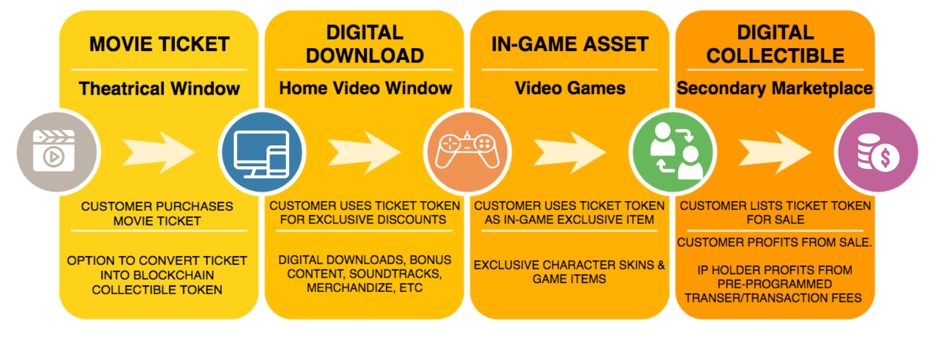
Royalties and rights management can be transformed entirely and streamlined through the use of blockchain. No need for lengthy and costly audits, when royalties are immediately and automatically distributed through smart contracts: The Berklee College of Music in collaboration with the MIT Media Lab, EY and Microsoft, Mediaocean and IBM,
Verify Media (formerly DotBlockchain) and Exactuals (An RBC/City National Company), and Sony Corporation are some of the players that have developed the most recent initiatives.
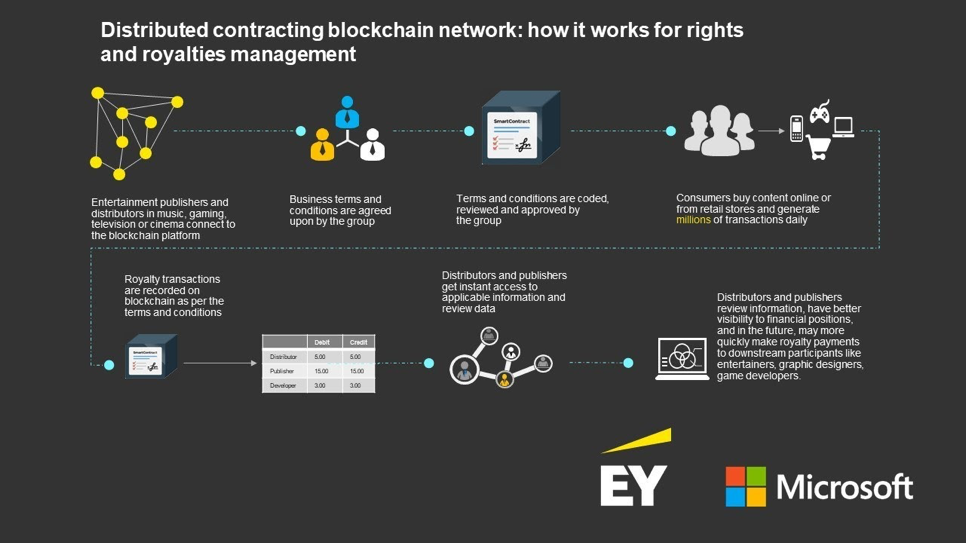
Figure: Distributed Contracting Blockchain Network
Source: EY and Microsoft blockchain solution for content rights and royalties press release
https://www.prnewswire.com/news-releases/ey-and-microsoft-launch-blockchain-solution-for-content-rights-and-royalties-management-for-media-and-entertainment-industry-300669800.html
The impact of blockchain technology on distribution and supply is double-edged. On the one hand, the technology has initially been promoted as disruptive: It could change business models, such as monetizing content for both creators and curators or building a one-stop content shop. On the other hand, blockchain technology can help sustain business models such as protecting intellectual property, digitizing the music value chain, and full game ownership of game assets in video games to generating new income streams for movie IPs through collectibles and virtual gifts.
But a lot of these solutions need to scale up technologically and commercially first. The next immediate adoption layer after the promises of the Initial Coin Offering wave seems to lie in B2B and enterprise solutions: These are being developed and implemented as a practical application of blockchain technology. Because the issue of scalability for public chains remains a challenge, corporations increasingly rely on the use of private and permissioned chains to get familiar with the technology in a secure environment. This enterprise adoption stage recalls the rollout and role of Intranet during Internet adoption in the early 1990s. At the core of these transformations, the tokenization of film finance is a first step forward. While Lumiere Project and Finfaribk made history by tokenizing the first film, “Papicha,” which was selected by the Cannes film festival and nominated by Algeria for the Oscars in 2019, other parties such as Proxicoin, Leonardo DiCaprio and tZero, Alibaba and Breaker, as well as Wesley Snipes announced plans for the next wave of tokenized movies.
Blockchain games offer players real ownership of game items, peer-to-peer trading, and the ability to transfer the game items from one game to the next. CryptoKitties, a blockchain game released in 2017, sold more than US$30m worth of digital assets. As digital ownership of blockchain gaming assets increases, new business models are emerging from free2play models such as the play2earn game economy models. Enjin Coin and game engine Unity3D, Ubisoft, Ultra, Consensys, Alto.io, EverdreamSoft, Gimbl, and B2Expand are leading the charge with the formation of the Blockchain Gaming Alliance to spread awareness about blockchain and encourage adoption in the gaming industry. Several ICO companies such as Ripple, Forte, and Tron have pledged that they would accelerate and finance blockchain games.
Blockchain technology can significantly enhance the ability of content owners and creators to collect payment from media companies for the digital content they produce and distribute, applied across the Video Game, Music and Film/TV sectors.
Video: Future of Gaming
Source: z16z | Youtube
Video: “Tokenizing the Film Industry”
Source: Toronto International Film Festival / Youtube
Video: “Open Music”
Source: Imagination in Action / Youtube
For anyone interested in learning more about the opportunities of Blockchain in entertainment, the Blockchain Global Entertainment Alliance has published a comprehensive report available as a free download
